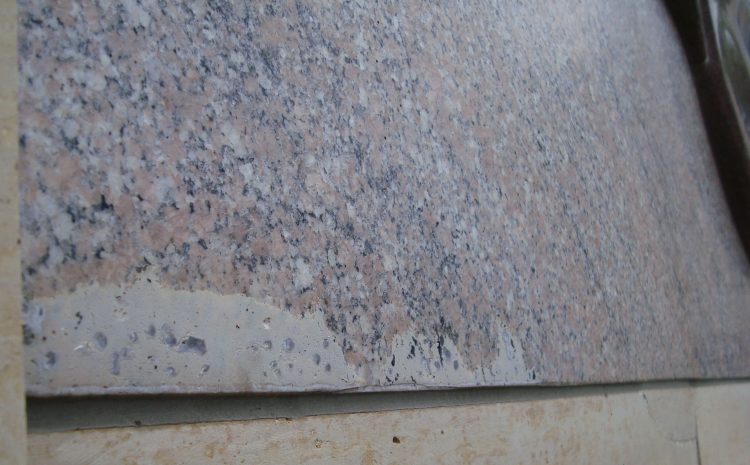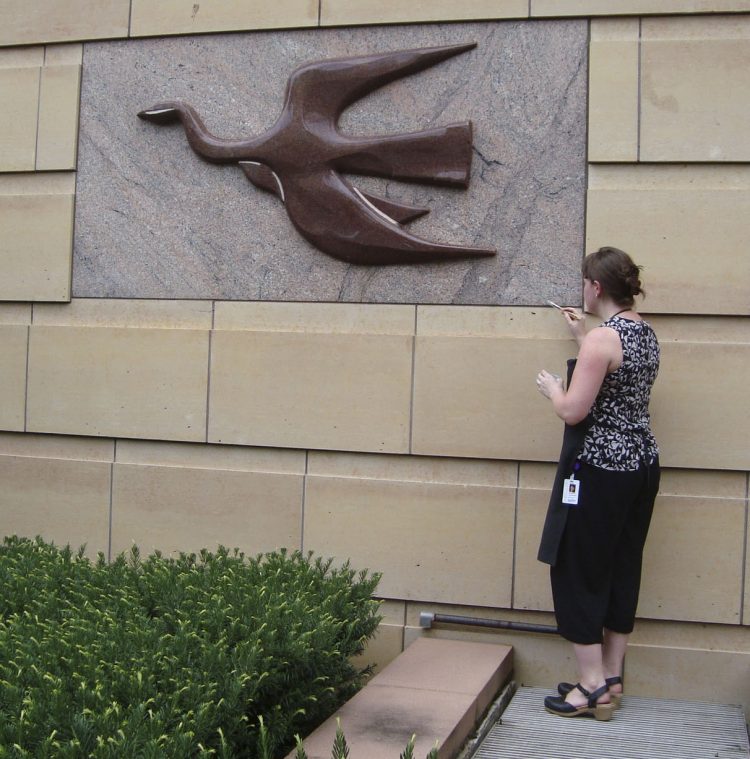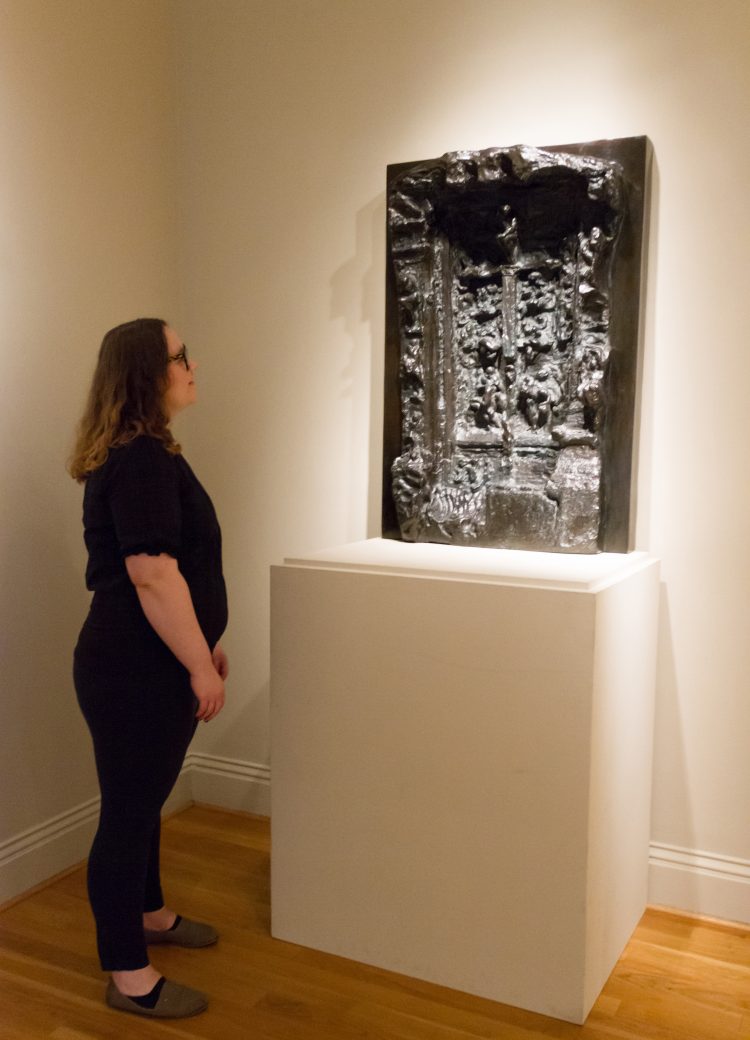
Simone Leigh, No Face (Crown Heights), 2018, Terracotta, graphite ink, salt-fired porcelain, epoxy, 20 x 8 x 8 in., The Phillips Collection, Director’s Discretionary Fund, 2018
Simone Leigh (b. 1967, Chicago) creates exquisitely crafted ceramic sculptures informed by her ongoing exploration of black female subjectivity and ethnography. Through ceramics, Leigh references vernacular visual traditions from the Caribbean, the American South, and the African continent, as well as the black diasporic experience dating from the Middle Passage to the present.
The faceless bust of No Face (Crown Heights) is encircled by a rosette featuring dozens of tiny, handcrafted ceramic roses. Leigh thinks of her sculptures as performative in the sense that she is “performing” the work of anonymous African potters (often women). The hollowness of the works is not meant to impart emptiness or anonymity, but rather the loss of authorship associated with African ceramics.
Leigh is the recipient of the prestigious 2018 Hugo Boss Prize.Her work is the collections of the Hammer Museum, Los Angeles; the Perez Art Museum, Miami; the Solomon R. Guggenheim Museum, New York; and the Studio Museum in Harlem, New York, among others.
“I am so pleased to embrace this subtle and thought-provoking work by Simone Leigh for The Phillips Collection. The personal, hand-made quality of this mysterious object engages us with surprising intensity. I’m particularly glad that we continue to add to the number of women artists represented in the collection.” —Vradenburg Director and CEO Dorothy Kosinski






